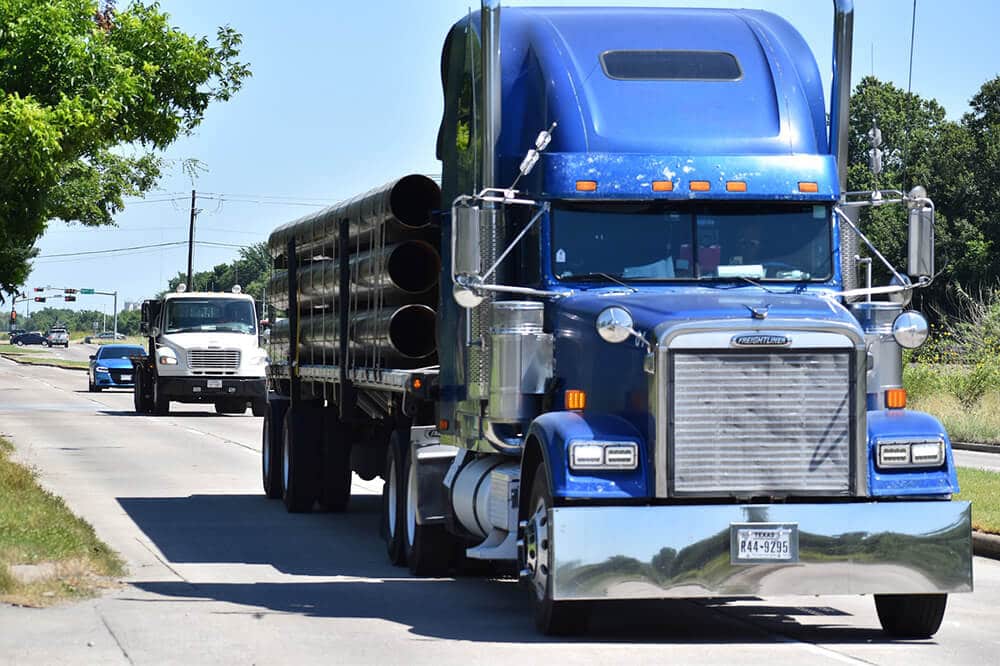
As a driver, you never expect the motorist in front of you to suddenly slam on the brakes while driving on the highway. But the simple fact is that you never know what the driver in front of you is going to do. Part of good defensive driving is making sure that you put adequate distance between yourself and the vehicle in front of you. This leaves sufficient room for you to react if an emergency arises.
So, what’s a safe driving distance on the highway? Read on to learn more about how to measure a safe distance between yourself and the car in front of you. If you have further questions about legal options following a car accident in West Virginia, reach out to the personal injury law firm of DiPiero Simmons McGinley & Bastress, PLLC.
What Is a Safe Following Distance on the Highway?
How do motorists know: What is a safe distance between cars when driving on the highway? A general rule to follow is to keep at least three seconds between your vehicle and the one in front of you. This three-second rule should be kept in mind as the minimum distance between two vehicles on the road.
Three seconds is generally considered a safe following distance under the best driving conditions, but it’s good to give yourself an even longer time cushion when traveling at higher speeds, on slippery or uneven road surfaces, in high traffic areas, or under adverse weather conditions. Factors like these will have an impact on your vehicle’s stopping distance—or how far it takes your car to come to a complete stop when you hit the brakes.
There is a simple method to use to measure your following distance in seconds, which includes:
- Identifying a fixed object near the road, such as a tree, building, bridge, or other landmark
- Watching for the rear bumper of the car in front of you to pass the object
- Beginning to count to three seconds
You should be able to count to three before the front bumper of your own vehicle reaches the same object. If you reach the object before three seconds have passed, you should increase the distance between your car and the one in front.
At a minimum, three seconds is a safe following distance at 65 mph on a highway on a dry, clear day with normal traffic patterns. If any other factors are in play, try to lengthen the distance between you and the vehicle in front of you to four or five seconds or more. The more of a buffer zone you can give yourself to react to another driver’s actions, the safer you will be if that driver brakes suddenly or behaves erratically.
Why Is Following Distance Important?
It’s important to use the three-second rule when driving because it gives you as the driver time to react when an emergency arises. If a car in front of your stops suddenly, you need adequate space between the vehicles to avoid colliding with the rear bumper of the car ahead of you. Following too closely is a high-risk driving behavior that frequently results in rear-end collisions.
Speed and tailgating in combination are even more dangerous. The faster you’re driving, the longer it will take your vehicle to stop when you brake. As a vehicle operator, you need to give yourself room to react. The advantages of a safe following distance are numerous. And, conversely, not maintaining a safe following distance can easily result in a collision.
Factors such as the following can impact how long it takes the driver to step on the brake when a hazard appears:
- Driving experience
- Lighting
- Weather conditions
For instance, a young driver with less road experience may have a slower reaction time than someone who has been driving for many years. Likewise, foggy or rainy weather can affect a motorist’s ability to act quickly in an emergency situation. And drivers impaired by drugs, alcohol, cell phone use, or another distraction are likely to have slowed reaction times—if they see the danger at all before impact.
If a rear-end collision occurs on a high-speed road like a highway, the results can be catastrophic. Accident victims are likely to suffer severe injuries, and damage to vehicles can be significant. The most common injuries in a high-speed rear-end collision include traumatic brain injuries (TBIs), whiplash, spinal cord damage, facial disfigurement, and leg injuries. Maintaining a safe following distance is one of the simplest—yet most important—ways to prevent these types of highway accidents.
West Virginia Traffic Laws for Following Distance
West Virginia state law prohibits drivers from following other vehicles too closely. According to the traffic code regarding following too closely, the driver of a motor vehicle is not permitted to follow another vehicle more closely than is “reasonable and prudent.” Exercising reasonable and prudent judgment includes taking into account the speed of your own and other vehicles, the current traffic situation, and the road condition of the highway.
Additionally, under most circumstances, it’s against the law for a large truck (over 8,000 pounds gross weight), bus, or motor vehicle towing another car to follow another similar large automobile within 200 feet. Except for funeral processions and military convoys, any vehicles in a caravan or motorcade must allow sufficient space between each vehicle so that any other car could enter between automobiles without danger.
What to Do After a Rear-End Collision
If you were hurt in a highway accident caused by another driver’s negligent actions, you may be entitled to compensation for the injuries and losses you suffered. As car accident attorneys, the lawyers at DiPiero Simmons McGinley & Bastress, PLLC have experience helping injured motor vehicle collision victims. We can assess a complicated accident and determine the factors that contributed to the crash, and which parties may be liable for the injuries you sustained.
Contact our office to schedule a free consultation to discuss your case. We never charge a fee to have a conversation about your legal options. We meet with car accident victims and their families in Charleston, WV and the surrounding areas.







